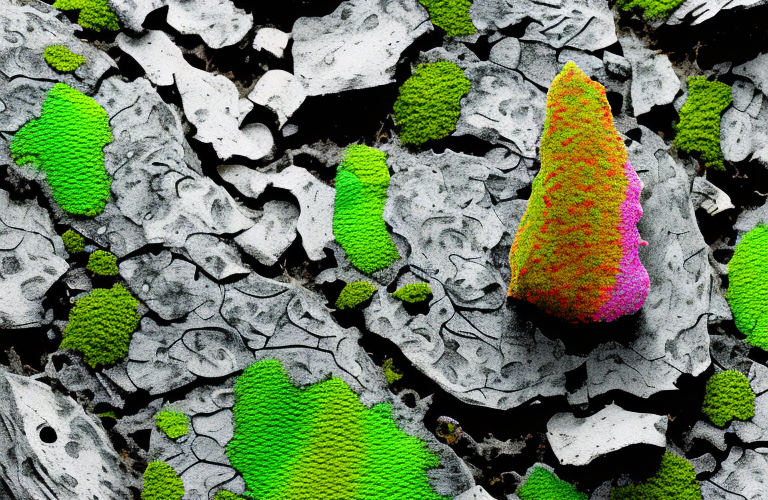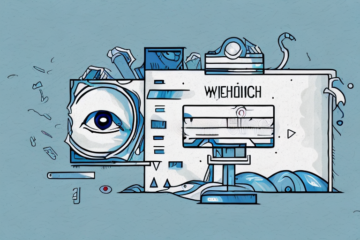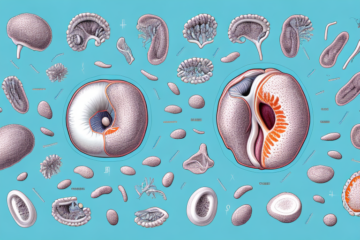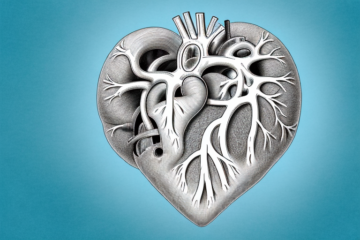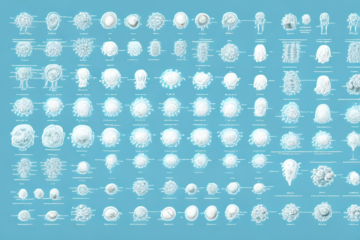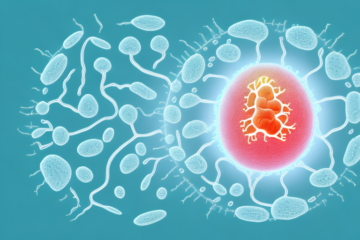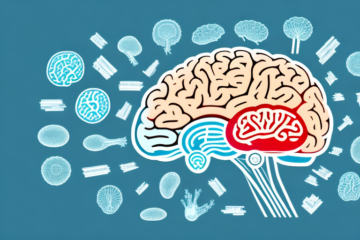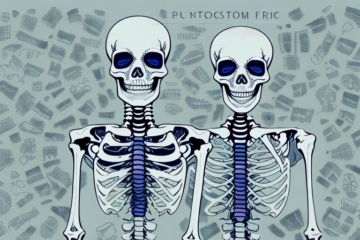Lichen planus is a chronic inflammatory skin disease that affects approximately 1-2% of the population. It can cause itchy, painful bumps and lesions on the skin, mouth, and other areas of the body. Lichen planus can be difficult to diagnose, but early detection and treatment can lead to a better prognosis. In this comprehensive guide, we will explore the different types of lichen planus, their symptoms and causes, various treatment options, and much more.
Understanding Lichen Planus: Definition and Overview
Lichen planus is a non-infectious, inflammatory condition that affects different parts of the body, including the skin, mouth, genitals, and scalp. This disease is characterized by shiny, flat-topped bumps that often have a purplish hue and are surrounded by white, lacy streaks. Interestingly, the name “lichen planus” is derived from the lichen plant, which shares a similar appearance – an irregular growth of parallel lines.
While the exact cause of lichen planus is unknown, it is believed to be an autoimmune disorder, where the body’s immune system attacks its own tissues. Certain medications, infections, and allergens may also trigger the condition. Lichen planus is not contagious and cannot be spread from person to person.
Although lichen planus can be uncomfortable and unsightly, it is usually not a serious condition and can be managed with treatment. Treatment options may include topical or oral medications, light therapy, or in severe cases, immunosuppressants. It is important to consult with a healthcare professional for proper diagnosis and treatment of lichen planus.
Types of Lichen Planus: Cutaneous, Oral, and Other Varieties
There are several types of lichen planus, each with unique symptoms and characteristics. The three most common varieties of lichen planus are:
- Cutaneous lichen planus: This type of lichen planus affects the skin, scalp, and nails. It often appears as purple, itchy, flat-topped bumps and plaques, typically on the inside of the wrists, ankles, or lower back.
- Oral lichen planus: This type of lichen planus affects the inside of the mouth, including the gums, tongue, and cheeks. It may cause painful or burning sores and ulcers, making eating and talking difficult.
- Other types of lichen planus: Lichen planus can also affect the nails, genital area, and even the esophagus, presenting a range of additional symptoms and complications.
It is important to note that while lichen planus is not contagious, it can be chronic and difficult to treat. In some cases, it may even lead to scarring or permanent changes in skin or oral tissue. Treatment options may include topical or oral medications, as well as lifestyle changes to manage symptoms and prevent flare-ups. If you suspect you may have lichen planus, it is important to consult with a healthcare professional for proper diagnosis and treatment.
Signs and Symptoms of Cutaneous Lichen Planus
When lichen planus affects the skin, it can cause a range of symptoms and skin changes, including:
- Patchy, flat-topped skin lesions that are reddish-purple in color
- Itching, soreness, or burning sensations on the affected skin
- Thin white lines or scales around the bumps, resembling lace
- Thickened, brittle, or crumbling nails
- Hair loss or bald patches on the scalp
In addition to these symptoms, cutaneous lichen planus can also cause hyperpigmentation or darkening of the affected skin. This can be particularly noticeable in people with darker skin tones. It is important to note that while cutaneous lichen planus can be uncomfortable and unsightly, it is not contagious and can be managed with proper treatment.
Oral Lichen Planus: Symptoms and Treatment
Oral lichen planus can cause a range of symptoms depending on its severity, including:
- Painful sores or ulcers on the gums, tongue, or other soft tissues inside the mouth
- Burning sensations or discomfort in the mouth
- Difficulty chewing, swallowing, or speaking
- Changes in taste or other sensations in the mouth
- White patches on the inside of the cheeks, tongue, or gums
Treatment options for oral lichen planus differ from the typical treatment for skin lichen planus because of the sensitive nature of the mouth due to eating and talking. If any of the symptoms above occur, it’s important to seek medical advice upon experiencing them to determine the correct course of action.
What Causes Lichen Planus? Recognizing Risk Factors
The exact cause of lichen planus is still unknown, and there is no single test to diagnose it. However, several factors may contribute to the development of lichen planus, including:
- Genetic predisposition to autoimmune disorders
- Exposure to certain chemicals or drugs
- Treatment with radiation therapy
- Infection with the hepatitis C virus
Recent studies have also suggested that stress and anxiety may play a role in the development of lichen planus. It is believed that stress can weaken the immune system, making it more susceptible to autoimmune disorders like lichen planus.
In addition, some research has linked lichen planus to certain dietary factors, such as a high intake of sugar and processed foods. It is thought that these foods can trigger inflammation in the body, which may contribute to the development of lichen planus.
Is Lichen Planus Contagious? Debunking Myths and Misconceptions
Lichen planus is not contagious and cannot be spread through direct contact with an infected person or object. It is not a form of an autoimmune disease either. Despite this, there are still some myths surrounding the disease, causing many misconceptions to arise regarding its cause and treatment. Therefore, it’s crucial that people become educated and address these misconceptions and myths quickly.
One of the most common myths about lichen planus is that it is caused by poor hygiene or a lack of cleanliness. However, this is not true. Lichen planus is a chronic inflammatory condition that can affect anyone, regardless of their hygiene habits. It is believed to be caused by an abnormal immune response, although the exact cause is still unknown. It’s important to understand that lichen planus is not a result of personal choices or lifestyle habits, and those who suffer from it should not be stigmatized or blamed for their condition.
Diagnosis of Lichen Planus: Tests and Procedures
Diagnosing lichen planus usually involves a combination of physical examinations, medical history reviews, and biopsy. Your doctor may take a small sample of affected skin or mucous membrane for microscopic examination, or order blood tests to help rule out other conditions with similar symptoms. If the diagnosis is confirmed, your doctor may work with you to create a treatment plan based on the specific type and severity of the disease.
In addition to the standard diagnostic procedures, your doctor may also perform a patch test to determine if you have an allergic reaction to a particular substance. This can help identify potential triggers for your lichen planus and guide you in making lifestyle changes to avoid them.
It is important to note that lichen planus can sometimes be difficult to diagnose, as it can mimic other skin conditions. In some cases, a skin biopsy may be inconclusive, and further testing may be necessary to confirm the diagnosis. If you are experiencing symptoms of lichen planus, it is important to seek medical attention and work closely with your doctor to determine the best course of treatment.
Treatment Options for Lichen Planus: Topical, Oral, and Alternative Therapies
The treatment options for lichen planus are varied and depend on the affected area of the body and the severity of the disease. Some treatment options include:
- Topical corticosteroid creams, ointments, or gels that can help reduce inflammation and itching
- Oral corticosteroids or antihistamines to reduce inflammation and soothe symptoms, as corticosteroids could be harmful to other parts of the body with long-term usage
- Photosensitive medications that make the skin more sensitive to light, giving targeted treatment to only the affected areas
- Alternative therapies such as phototherapy or acupuncture
It is important to note that treatment for lichen planus is not always necessary, as the condition can often resolve on its own. However, if symptoms persist or worsen, seeking medical treatment is recommended.
In addition to the aforementioned treatment options, lifestyle changes such as avoiding triggers that may exacerbate symptoms, maintaining good oral hygiene, and reducing stress levels may also be beneficial in managing lichen planus.
Managing Itchy Skin: Tips for Coping with the Discomfort Associated with Lichen Planus
Itchy, uncomfortable skin is one of the most common and distressing symptoms of lichen planus. Here are some tips to help manage itchy skin and discomfort:
- Avoid hot showers or baths, which can further dry out the skin and exacerbate itching.
- Apply a cold, damp compress or aloe vera gel onto the itchy parts of your body.
- Use fragrance-free lotions or creams to soothe dry, flaky skin.
- Avoid scratching the affected area as it could cause inflammation and increase itching and discomfort.
Aside from the tips mentioned above, there are other ways to manage itchy skin caused by lichen planus. One of which is to wear loose-fitting clothing made of breathable fabrics such as cotton. This can help prevent irritation and further discomfort.
Another way to manage itchy skin is to avoid exposure to extreme temperatures. This means avoiding both hot and cold environments as they can trigger itching and discomfort. Additionally, it is important to maintain good hygiene by taking regular baths or showers using mild, fragrance-free soap to prevent further irritation.
Living with Lichen Planus: Coping Strategies and Support Resources
Living with lichen planus can be challenging, not only because of the physical symptoms but also due to the emotional toll it can take. Here are some coping strategies and resources to help:
- Join a support group or connect with other individuals who have lichen planus
- Practice stress-relieving techniques, such as yoga or meditation
- Speak to a mental health professional if lichen planus is causing severe anxiety or depression
It is important to also take care of your physical health when living with lichen planus. This may include maintaining a healthy diet, getting regular exercise, and avoiding triggers that may worsen symptoms. Additionally, it may be helpful to keep a symptom diary to track any changes or patterns in your symptoms.
There are also various treatment options available for lichen planus, including topical and oral medications, light therapy, and immunosuppressants. It is important to work with a healthcare provider to determine the best treatment plan for your individual needs.
Preventing Recurrences of Lichen Planus: Lifestyle Changes and Prevention Tips
Currently, there is no surefire way to prevent lichen planus. However, some factors that can help avoid future episodes of the disease include:
- Avoiding harsh chemicals or similar substances that could trigger an episode, such as some non-steroidal anti-inflammatory drugs
- Practicing good oral hygiene routines to reduce the severity of oral lichen planus
- Having regular checkups with a dermatologist to promote early diagnosis and treatment of lichen planus
In addition to the above prevention tips, making certain lifestyle changes can also help prevent recurrences of lichen planus. These changes include:
- Reducing stress levels through relaxation techniques such as yoga or meditation
- Eating a healthy, balanced diet that includes plenty of fruits and vegetables
- Avoiding smoking and excessive alcohol consumption
By incorporating these lifestyle changes along with the prevention tips mentioned earlier, individuals with lichen planus can reduce the likelihood of future episodes and manage the symptoms of the disease more effectively.
When to Seek Medical Attention for Severe Cases of Lichen Planus
If you experience severe inflammation, unbearable itchiness or you find it increasingly difficult to eat, speak, or perform everyday tasks due to the severity of your lichen planus, it’s best to promptly seek medical attention to manage symptoms and create an individualized treatment plan based on the severity of the disease.
It’s important to note that while lichen planus is not contagious, it can be a chronic condition that requires ongoing management. In some cases, lichen planus can also be a sign of an underlying autoimmune disorder, so it’s important to discuss any symptoms with your healthcare provider to determine the best course of treatment.
Natural Remedies for Managing Symptoms of Lichen Planus
While there is no cure for lichen planus, certain natural remedies can help manage its symptoms, including:
- Vitamin D supplements, which may help decrease inflammation and itching
- Manuka honey or other natural anti-inflammatory and antibacterial agents helping alleviate discomfort and promote healing
- Coconut oil or other oils that can help soothe and moisturize the skin to combat dryness and inflammation
In addition to these natural remedies, it is important to maintain good oral hygiene if lichen planus affects the mouth. This can include using a gentle toothbrush and avoiding harsh mouthwashes that can irritate the gums and tongue.
It is also recommended to avoid triggers that can worsen symptoms, such as stress, certain medications, and exposure to allergens. Practicing stress-reducing techniques, such as meditation or yoga, can help manage symptoms and improve overall well-being.
Research Advances in Understanding and Treating Lichen Planus
Recent advances in scientific research have led to a better understanding of lichen planus and possible treatment options. Some of the new findings include:
- The potential for using biologic therapies, which target specific immune cells, to treat oral lichen planus
- The use of laser therapy to treat refractory cases of cutaneous lichen planus
- Further research on the use of phototherapy or light therapy to treat lichen planus, which uses ultraviolet light to penetrate the skin tissue
Another promising area of research is the use of topical calcineurin inhibitors, which have shown effectiveness in treating lichen planus lesions on the skin and mucous membranes. These inhibitors work by suppressing the immune response that causes inflammation and damage to the affected tissues.
Additionally, studies have shown that certain dietary changes may help manage lichen planus symptoms. A diet rich in antioxidants and anti-inflammatory foods, such as fruits, vegetables, and omega-3 fatty acids, may help reduce inflammation and improve overall health in individuals with lichen planus.
Conclusion
Lichen planus is a challenging condition that affects millions of people worldwide, but there are many ways to manage its symptoms and improve quality of life. Awareness and education are key to understanding the different types of lichen planus, possible causes, and treatment options. Through a combination of medical treatment, lifestyle changes, and supportive care, people living with lichen planus can find relief and hope for the future.

